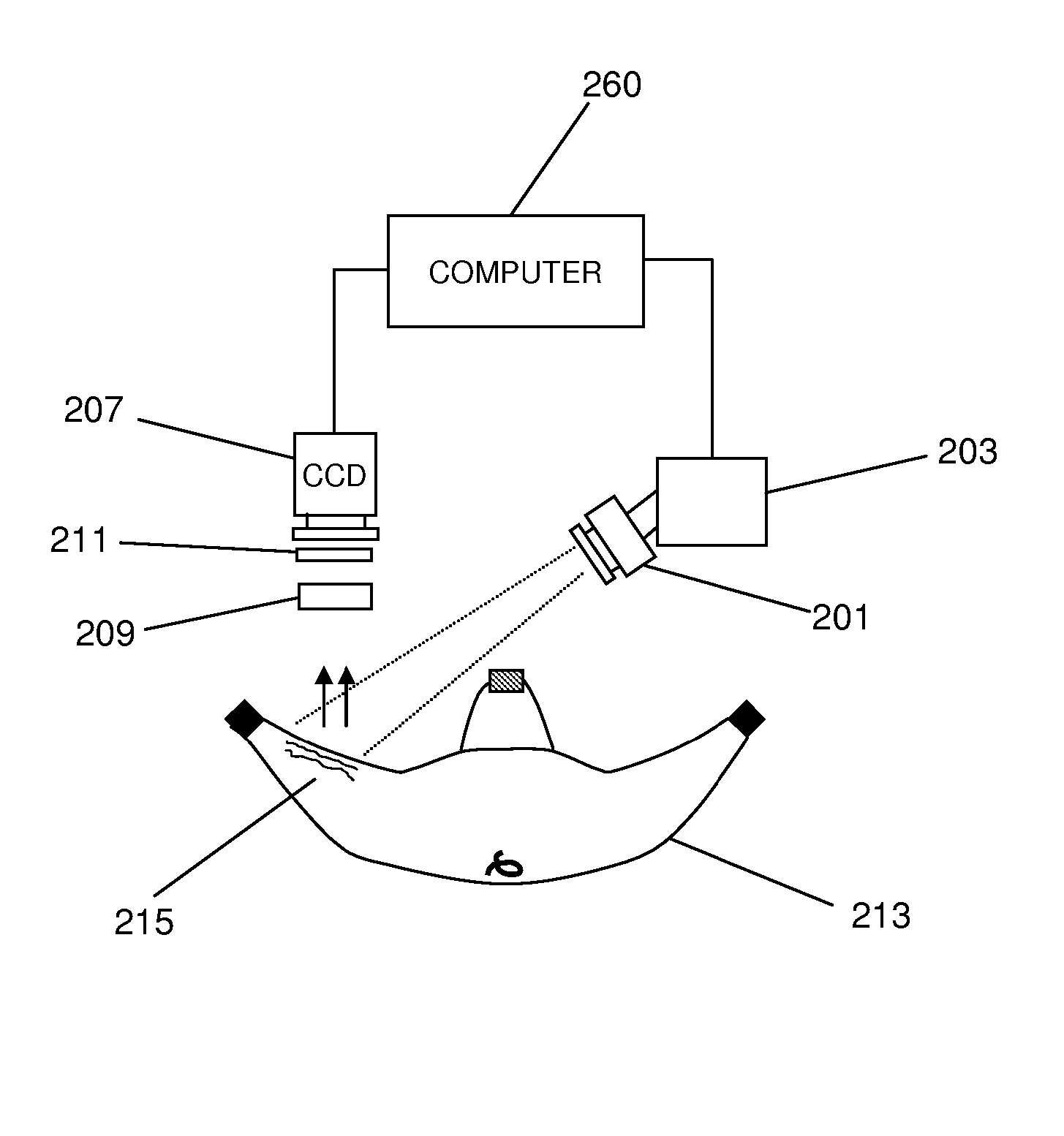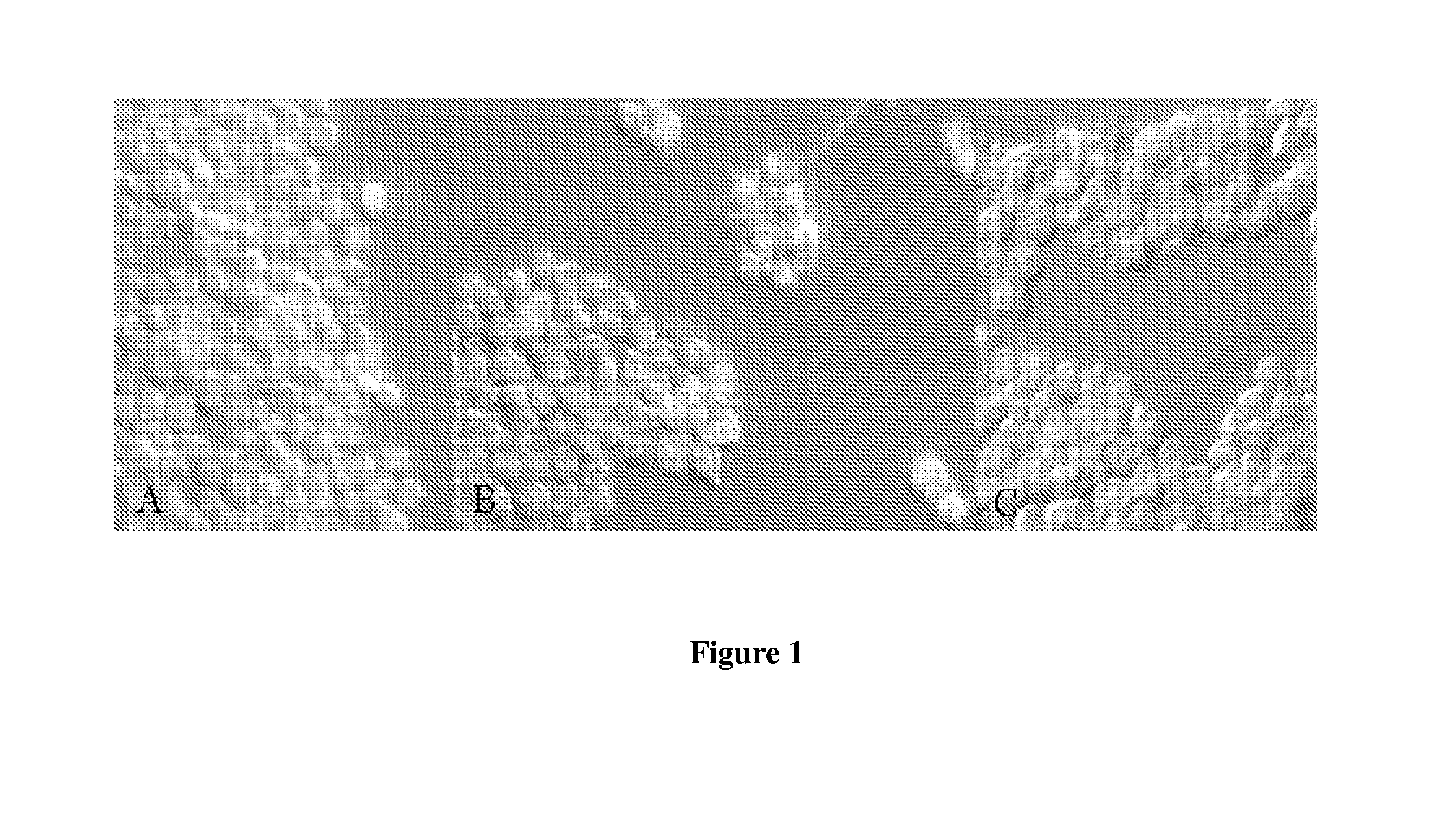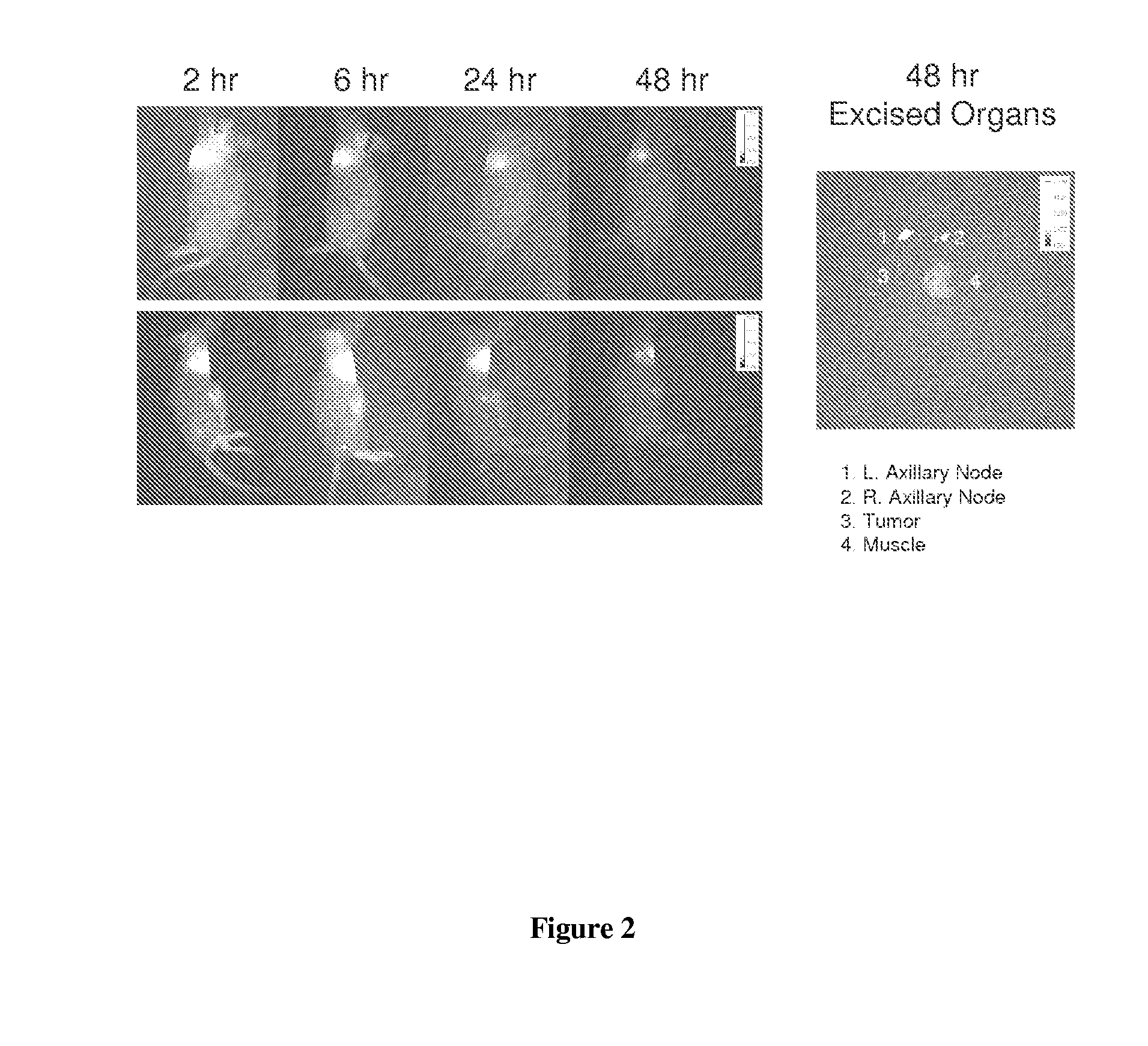Molecular imaging of epithelial cells in lymph
- Summary
- Abstract
- Description
- Claims
- Application Information
AI Technical Summary
Benefits of technology
Problems solved by technology
Method used
Image
Examples
example
Demonstration of Binding of NIR Dye Labeled, Anti-Human EpCAM to Cancer Epithelial Cells
[0038] In FIG. 1, the anti-human EpCAM antibody was labeled with NIR fluorescent dye was used to incubate human epithelial cancer cell lines, breast cancers SKBR3 (A) and MDA-MB-231 (B) and human, non-epithelial melanoma cancer cell line, M21 (C). Fluorescence microscopy showed that the imaging conjugate (red color) binds to the epithelial cells and minimally to the non-epithelial cancer cells as determined by the red labeling of the cells in FIG. 1 parts A, and B. The cell nuclei were stained Sytox green for reference.
[0039] The results showed that the imaging agent binds to epithelial cells in culture, but not to non-epithelial cell lines. It is important to note that 90% of all human cancers are epithelial and therefore can be targeted with the imaging agent.
Demonstration of NIR-Dye Labeled Anti-EpCAM (Mouse) Targeting to Murine 4T1 Mammary Carcinoma Cells in Axillary Lymph Nodes Associat...
PUM
 Login to View More
Login to View More Abstract
Description
Claims
Application Information
 Login to View More
Login to View More - R&D
- Intellectual Property
- Life Sciences
- Materials
- Tech Scout
- Unparalleled Data Quality
- Higher Quality Content
- 60% Fewer Hallucinations
Browse by: Latest US Patents, China's latest patents, Technical Efficacy Thesaurus, Application Domain, Technology Topic, Popular Technical Reports.
© 2025 PatSnap. All rights reserved.Legal|Privacy policy|Modern Slavery Act Transparency Statement|Sitemap|About US| Contact US: help@patsnap.com



